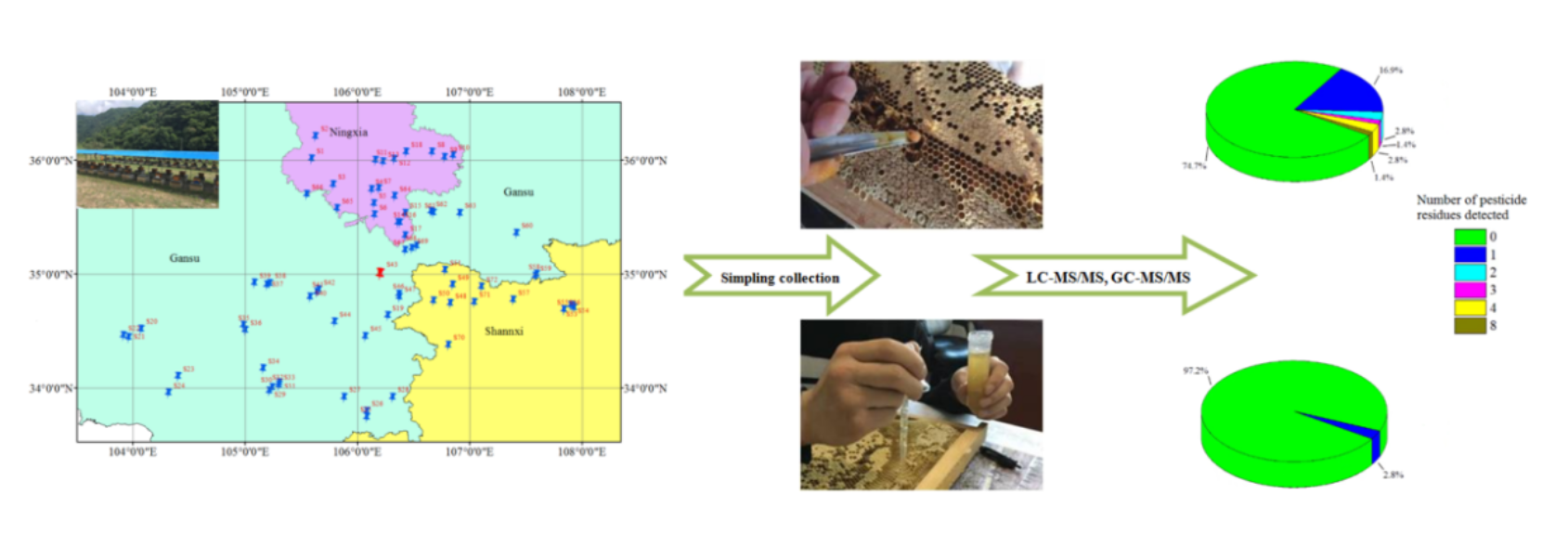Low Pesticide Residues and High Safety in Honey of Apis cerana cerana
Date:2022-07-06
Institute of Apicultural Research, Chinese Academy of Agricultural Sciences has investigated the pesticide residues in the beebread and honey of Apis cerana cerana (A. c. cerana) and conducted a related risk assessment. The results show that detection rate and residual concentration of pesticide residues in the beebread and honey of A. c. cerana are lower than those reported in foreign literature on western honeybees. In addition, the risk assessment exhibits no risks on human beings and honeybees. Relevant results were published in《Ecotoxicology and Environmental Safety》.
A. c. cerana is one the main bee species reared in China. As a native bee species, it is widely distributed and plays an important role in maintaining ecosystem stability and increasing agricultural production. At the same time, a great number of honeybees can be obtained by rearing A. c. cerana, which can improve the local economic development, poverty alleviation as well as rural revitalization. Previous studies show that pesticide residues in food and the environment that pollinators encounter are important reasons of the decline in the species and numbers of pollinators like Western honeybees. However, the studies on pesticide residues in A. c. cerana and relevant products are limited.
The study investigated pesticide residues in the beebread and honey of A. c. cerana around the Liupanshan Mountains in West China and found the current residual level of thiamethoxam is safe for bee colonies. At the same time, the risk to human of pesticide residues in honey was also assessed according to the dietary exposure assessment method. Results show that the detection rate of pesticide residues (25.4% in beebread and 2.8% in honey) and residue concentrations were lower than those reported on Western honeybees in other countries and regions. In addition, the pesticide residue level in honey of A. c. cerana is far below the risk warning line and has no safety risk to consumers.
Meanwhile, the study analyzed reasons for the lower detect rate and concentration of pesticide residues in bee products and concluded that it was mainly related to the bees’ survival and rearing environment. Usually, A. c. cerana was reared in mountainous and semi-mountainous areas with lower pesticide application, while western bees mainly use pesticide-applied crops as nectar sources (such as rapeseed and sunflower, etc.). This research provides a theoretical basis for the protection of A. c. cerana and the safety of bee products to a certain extent. It also provides technological support for A. c. cerana industry to play a greater role in rural revitalization.

Link:https://doi.org/10.1016/j.ecoenv.2022.113574